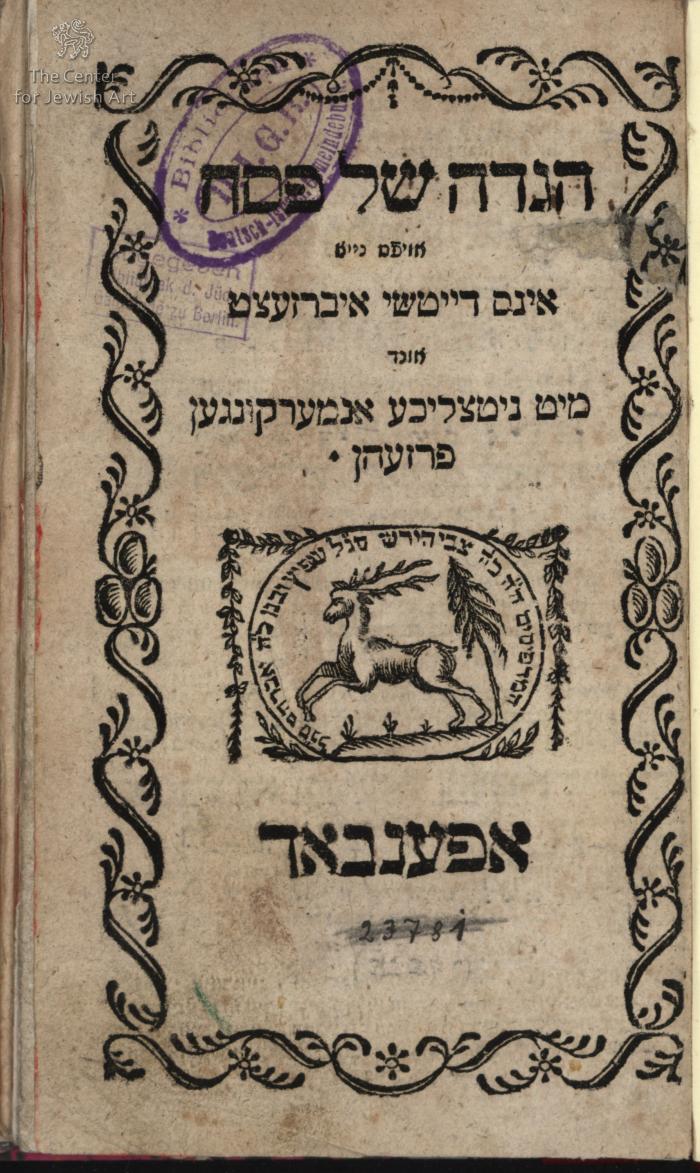Obj. ID: 35592 Haggadah shel Pesach, Offenbach, 1795

sub-set tree:
This text was prepared by William Gross:
A small format, immensely popular edition of the Passover Haggadah that appeared in a few editions within a short time. It is a reprint of the Haggadah with Joel Brill’s German translation in Hebrew characters.
While some of the illustrations are copied from the Amsterdam Haggadah pictorial cycle, several are very similar to the type of illustration used in 18th-century Hebrew illuminated manuscripts. This is particularly true of the charming depiction of a family celebrating around the holiday table laden that appears in the middle of the Haggadah. The entire scene has a contemporary flavor.
Title page with foliate frame and the printer’s emblem of Zevi Hirsch Segal Spitz and his son Abraham: a running stag (Zevi in Hebrew; Hirsch in Yiddish).
After a hiatus of a few decades, Hebrew printing resumed in Offenbach in 1767, when the Tzvi Hirsch Segal Spitz of Pressburg opened a printing-house. His press continued to function after his death in 1809 under his son, Abraham Spitz, and remained active until 1832.














